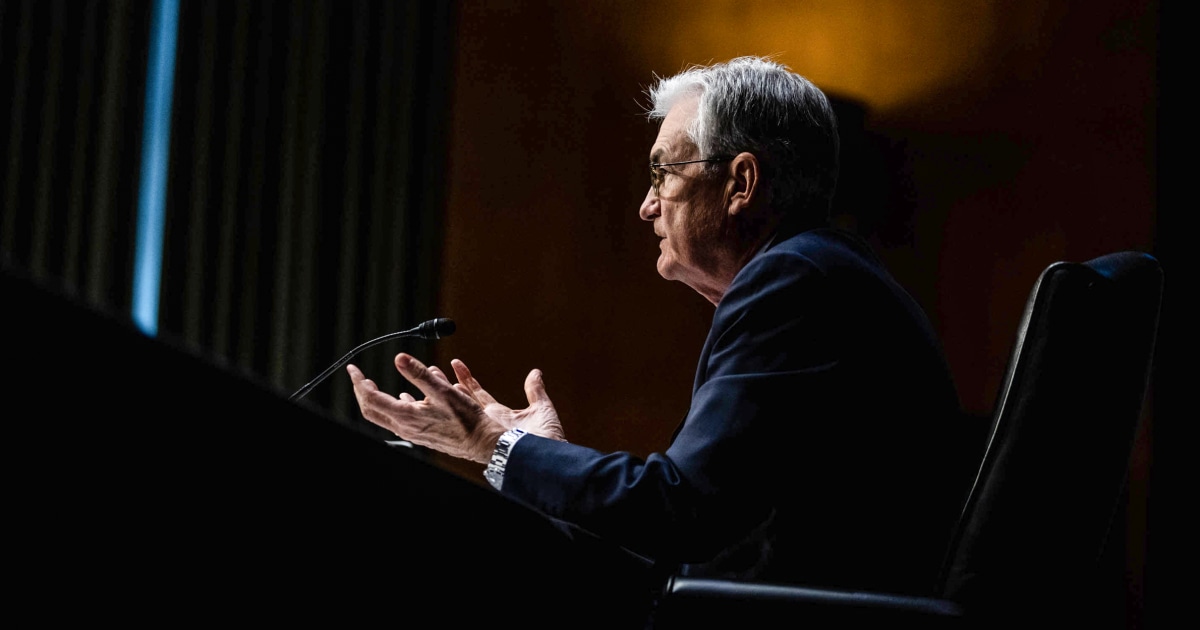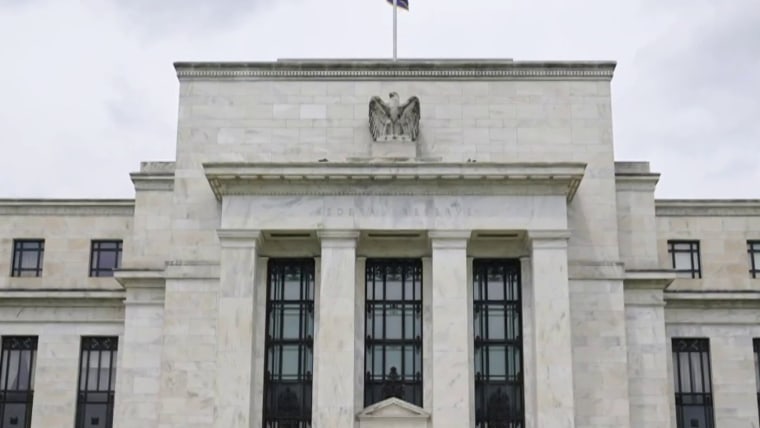
Fed points to strengthening economy, signals it will hike interest rates ‘soon’
The Federal Reserve mentioned Wednesday that it would keep the line on shorter-expression fascination costs, with an eye toward raising them “soon,” and that it would pare the amount of its asset buys, bringing them to a halt in early March.
“The committee is of a thoughts to increase the federal money level at the March assembly,” Chairman Jerome Powell claimed Wednesday afternoon at a information conference immediately after a two-day policymaking meeting. That would indicate the level hike would arrive practically exactly two years to the working day after the central bank slashed prices to zero in response to the emergence of the quickly-spreading coronavirus, which threatened to destabilize the total fiscal program.
Rapidly-forward to 2022 and the macroeconomic climate has transformed markedly: Now, the finest economic be concerned for a lot of is fast increasing selling prices of foodstuff, gas, housing and a host of other products and providers.
“It hasn’t gotten far better. It is most likely gotten just a bit even worse,” Powell said of his latest outlook on inflation, compared to what he projected at the previous assembly in December.
When situations alter immediately, it can depart the Fed taking part in catch-up — a place that presents Wall Road heartburn.
As anticipated, several of the questions Powell fielded targeted on desire premiums, which he stressed were heading to be the “active tool” the Fed strategies to use to tamp down inflation.
According to the CME’s FedWatch Software, marketplace individuals anticipate a quarter-percentage-stage (25-basis-point) price hike at the March assembly with in close proximity to-90 {ac23b82de22bd478cde2a3afa9e55fd5f696f5668b46466ac4c8be2ee1b69550} likelihood.
“I assume there’s really a bit of place to increase desire fees without threatening the labor market place,” Powell reported, a remark that prompted Wall Road to pare most of the gains it experienced achieved before in the working day.
In addition to desire prices — its finest-recognized policy tool — the Fed also retained monetary policy free about the earlier two yrs by obtaining billions of pounds in Treasuries and mortgage-backed bonds every thirty day period, a method it has started winding down. The buys have just about doubled the Fed’s harmony sheet in excess of the past two many years, and Wall Road is also hunting for Fed officers to give guidance about when and how quickly they will get started to pare the total of those people holdings, both by allowing them drop off as they experienced or by marketing them.
“What took the market by surprise in December was the notion that they designed quantitative tightening a near-phrase challenge,” stated Keith Buchanan, the portfolio manager at Globalt Investments. “That released to the market the concept of individuals simultaneous steps, which set the stage for what we observed in January” — precisely, the dramatic industry swings and elevated volatility as traders tried out to sport out the economic influence of policymakers’ expanding far more fearful that inflation would mar economic expansion in 2022.
The major essential for the Fed is to show it is using inflation critically.
A sluggish trajectory is generally in maintaining with the Fed’s calculated, deliberate rate of monetary plan adjustment. As an establishment, the central financial institution tends to adopt a long operate-up of interaction ahead of it functions. But when conditions change promptly, it can leave the Fed playing catch-up — a posture that provides Wall Avenue heartburn and that is a person of the culprits market place observers blame for the wild gyrations the main indices have been through in latest times.
“Historically, the Fed is actually seeking to calm markets … but calming marketplaces soon after this kind of an intensive bout of volatility is likely to be tricky,” mentioned David Norris, a husband or wife and the head of U.S. credit rating at TwentyFour Asset Management.
The Fed realized — also late, Norris claimed — that the price inflation plaguing U.S. firms and people alike was both broader and extended-lasting than it had expected.
“I would have preferred to have seen the Fed announce an conclusion to quantitative easing in the last quarter, as nicely as start off beginning to increase costs, just since they’re so much driving the curve and rather a lengthy strategies from neutral,” Norris explained.
There ended up also inquiries about the timing and the rate of shrinking the equilibrium sheet. Powell stated policymakers experienced not produced a conclusion about those two elements, whilst he acknowledged that, at almost $9 trillion, the Fed’s holdings would most likely be subject matter to a “substantial” drawdown.
Mona Mahajan, a senior financial commitment strategist at Edward Jones, mentioned shrinking the Fed’s equilibrium sheet will enable unwind these kinds of distortions. “In eradicating liquidity from the system, the place we have truly observed that enjoy out in marketplaces is supplying much less air to the a lot more speculative, increased valuation components of the industry,” she said.
Even without having the pandemic in the combine, the Fed has a fragile balancing act. “There’s a large amount of other moving sections that are coming in to the discussion,” stated Charlie Ripley, the vice president of portfolio management for Allianz Financial investment Management. “Higher wages could continue to make inflation far more persistent as we go via 2022.”
Marketplaces these days will need reassurance that the Fed can and will choose goal at inflation, lest it escalate further more. “The major essential for them is to say they’re taking this critically,” explained Lawrence Gillum, a mounted earnings strategist at LPL Economic.
Powell acknowledged the difficulties for the central lender, declaring policymakers have to navigate cross-currents and what he known as “two-sided risks” — inflation on a person side, the pandemic on the other. He also noted that the pandemic’s stampede by China, a region largely missing in immunity to the remarkably contagious omicron variant of the coronavirus. He reported China’s zero-Covid plan “may enjoy into much more troubles in supply chains” to the extent that the government forces shutdowns of factories and ports.
The pandemic destroyed some 22 million jobs, triggering the maximum spike in the unemployment price because the Good Melancholy. Although the employment image has improved markedly because then, labor participation continues to be puzzlingly sluggish. Economists have discovered a selection of possible causes, like disruptive college closures, which have relegated numerous previous personnel to unpaid boy or girl care duties a increasing phase of the country’s getting older population’s opting for early retirement better individual price savings fees, which have provided personnel more versatility in their work lookups and lessen degrees of immigration.
With so quite a few possible employees sidelined, providers have been raising pay out — which is very good information for position seekers but provides to the cost pressures firms confront on leading of provide chain bottlenecks.
“We feel generally inflation is established to slide but set to keep on being elevated compared to pre-pandemic developments,” Mahajan claimed. “We’re starting off to see early indicators that the offer chain disruptions might be starting to relieve. Wherever we’re even now watching for enhancement is the labor shortages.”
Gillum stated, “It’s going to be hard to engineer a tender landing,” but he also reported crystal clear conversation from Fed officers could aid soothe a anxious Wall Street. “Rate hikes in and of by themselves never signify fairness marketplaces are going to sell off. It just indicates that we’re mid-cycle,” he reported. “It doesn’t imply the financial system is on the brink of recession.”

